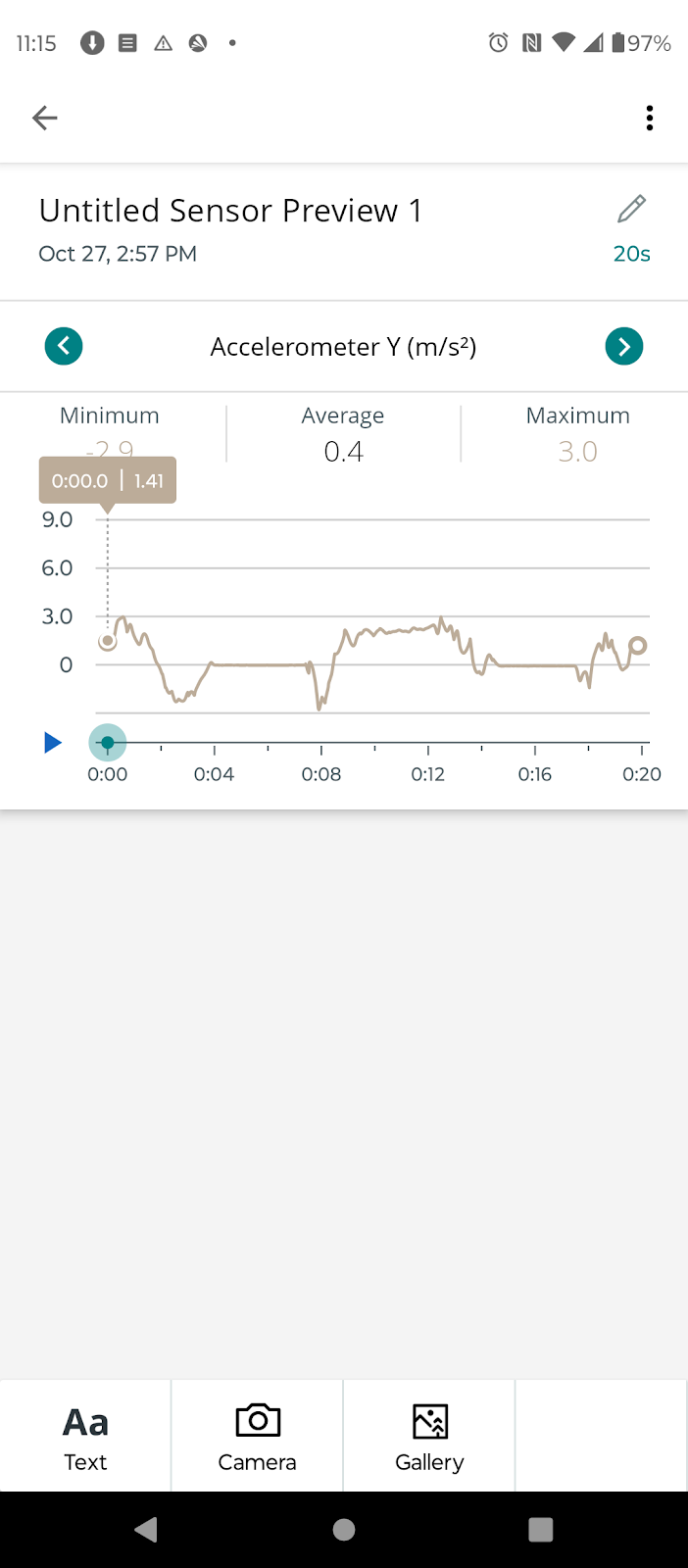Let me fill in a few details. This was my setup.
The phone was two feet from me and it was oriented as the arrow.
I opened the Arduino Science Journal app and opened the accelerometer sensor cards (all three dimensions) before laying the phone down on the concrete slab, then I started recording. I stomped twice. Here's the recordings
Of course, I was recording the vibrations in the concrete. I was also simulating a seismograph, the instrument used to record vibrations in the Earth.
When looking at the tracings, keep in mind that the z direction is straight up perpendicular to the face of the phone. The x direction is left and right, and the y direction is along the long dimension of the screen.
Vibrations along the z dimension and those along the x and y dimensions are actually two different kinds of vibrations and they mean different things to a seismologist.
The vibrations I recorded are sorta complicated. There are more than a handful of different kinds of waves that can arise in concrete...or the Earth due to earthquakes, landslides, mining operations, charges set off by researchers, bomb tests, etc. But the two kinds of most interest to seismologists are body waves, waves that travel through the Earth. Secondary and primary waves are usually abbreviated as S and P waves.
P waves are "primary" because they're faster than S waves and usually appear first on the seismograph. The X and Y tracings above record mostly P waves and you can tell that they start a fraction of a second before the waves on the Z tracing. They're like sound waves, compressional waves that move the particles in the material back and forth. They can travel through any kind of material, perhaps slowing down at boundaries or being bent.
S waves, the ones showing up on the Z tracing, are like ocean waves, ripples through the materials and, even though they can appear on the surface of lakes and oceans, they're shear distortions and can't travel deeply through fluids. For instance, they're blocked by fluid layers in the Earth.
We haven't been able to go very deeply into our planet. The deepest anyone has been is the Kola Superdeep borehole in Russia at 12,262 meters (40,229 feet or 7.6 miles). The Earth is 6,371 kilometers thick. We have a long way to go.
But we do know a lot about the internal structure of the Earth and are still learning a lot of details, and most of what we know comes from understanding the nature of these waves and studying the tracings of vibrations sent through the Earth by earthquakes and other disturbances.
Seismic waves have many other purposes. Do you want to know how far it is to solid bedrock? It's easier to set off a small charge and record the echoes sent back up to the surface than to dig a deep hole.
The way seismologists can know where an earthquake occurs, where the epicenter is, is by triangulating between three sets of seismograph readings.
If you want to explore actual seismic waves with your cellphone, you need some way of fixing it to solid bedrock. The colluvium that covers this area is too springy and would dampen most seismic waves. A pole down to bedrock could be useful if you don't have any convenient outcroppings. Of course, it might be interesting to study how sound travels through soft earth. An "earthquake" in south Florida is a tractor trailer traveling on the Tammiammi Trail.
Also, keep in mind that what the accelerometers in you phone measure are not displacement, but acceleration...not meters, but meters per second squared.
There's a vast body of knowledge of seismology but it's easy to understand and can make fascinating reading, and it's within reach of anyone with a cellphone.





No comments:
Post a Comment